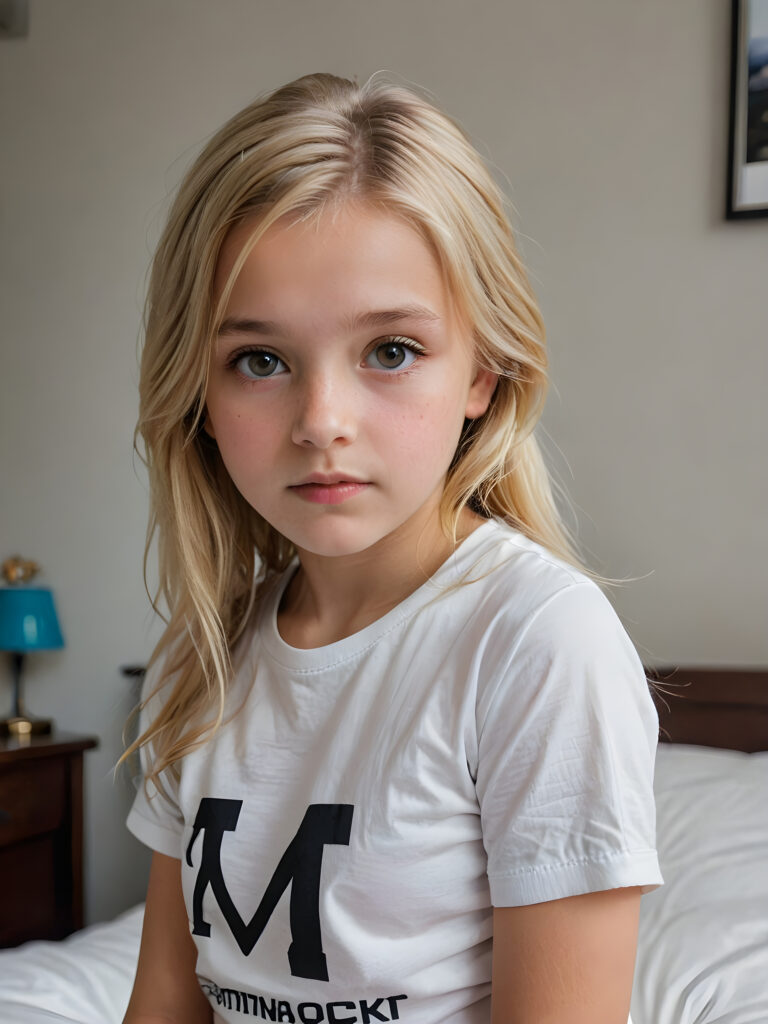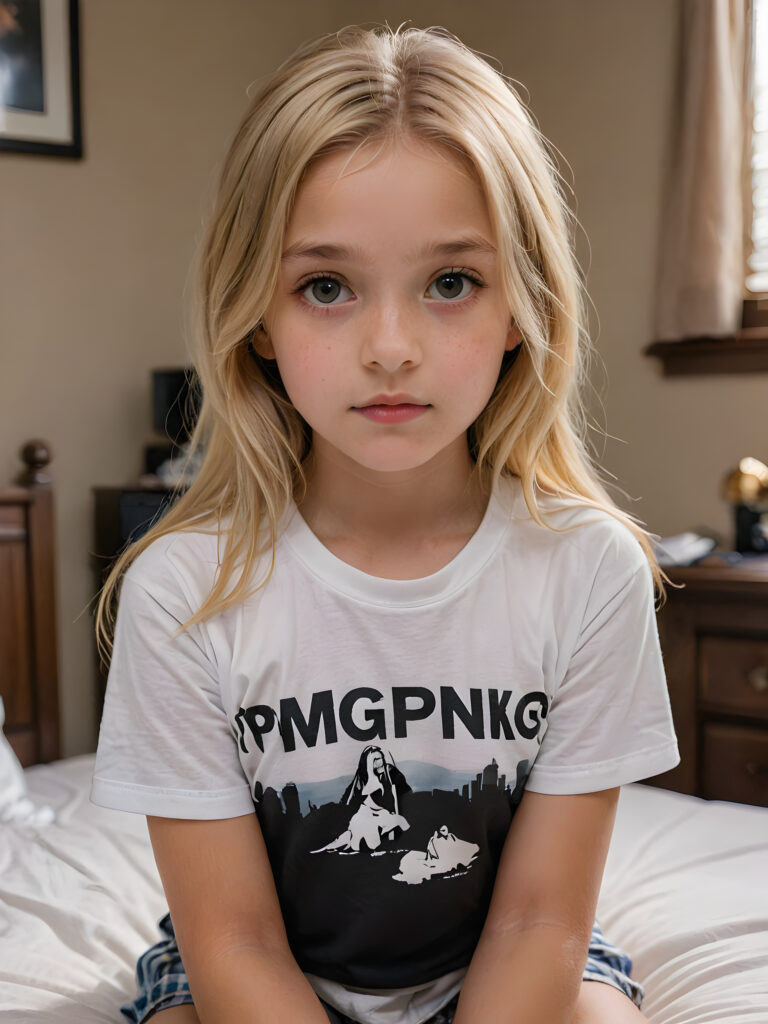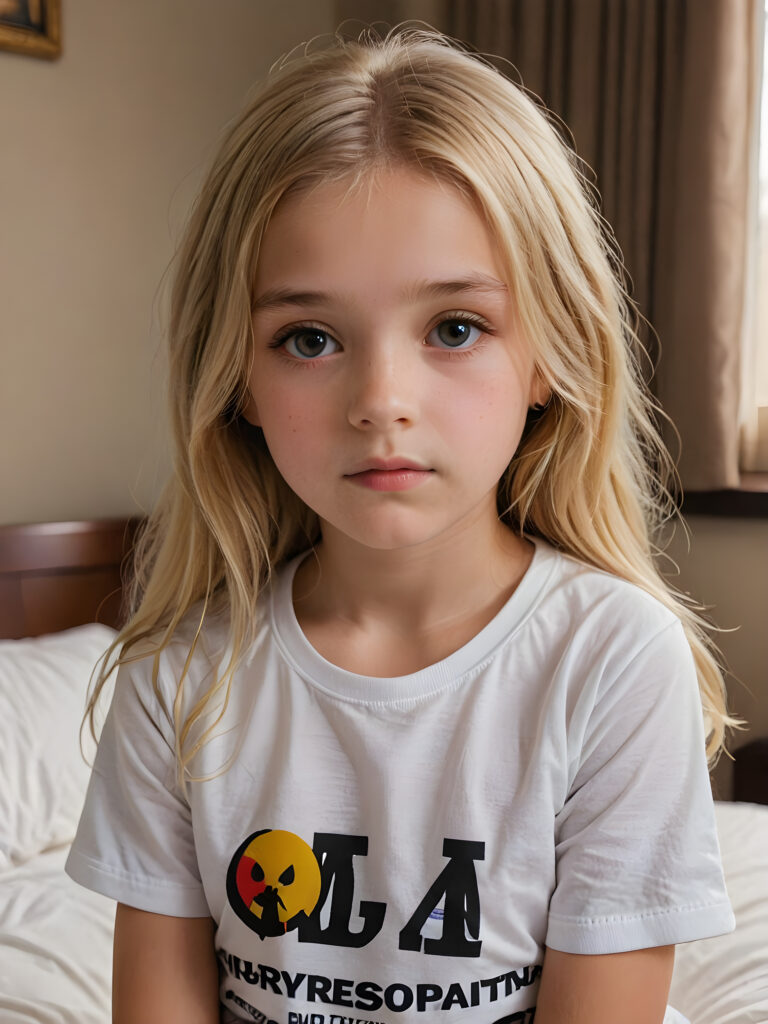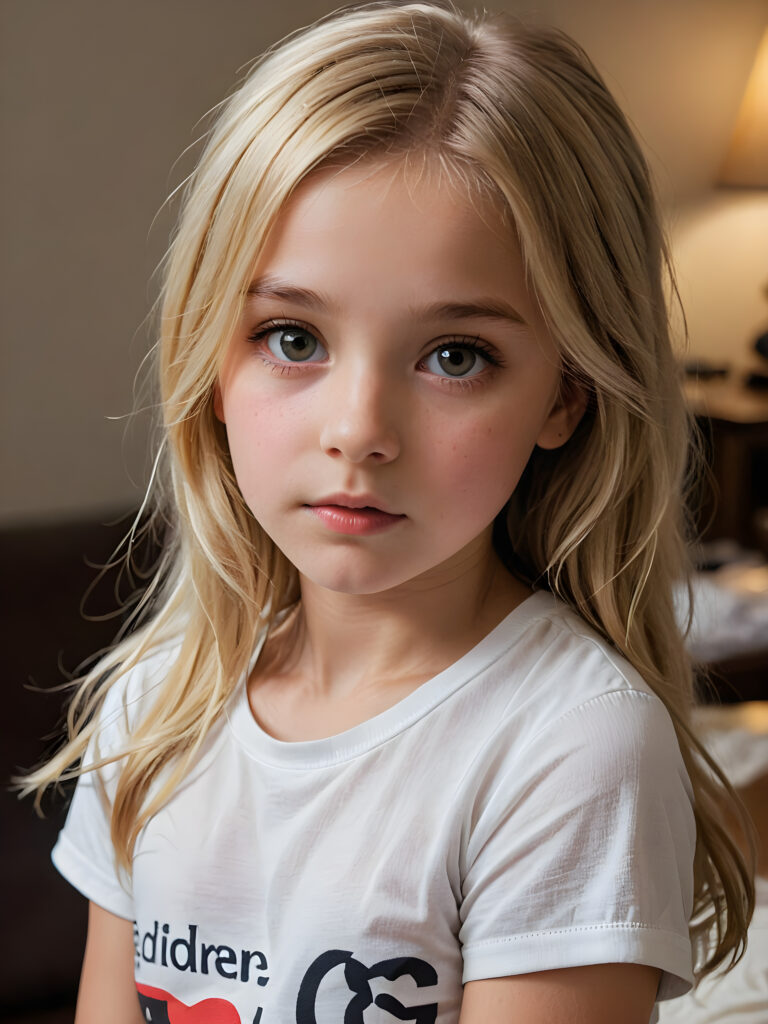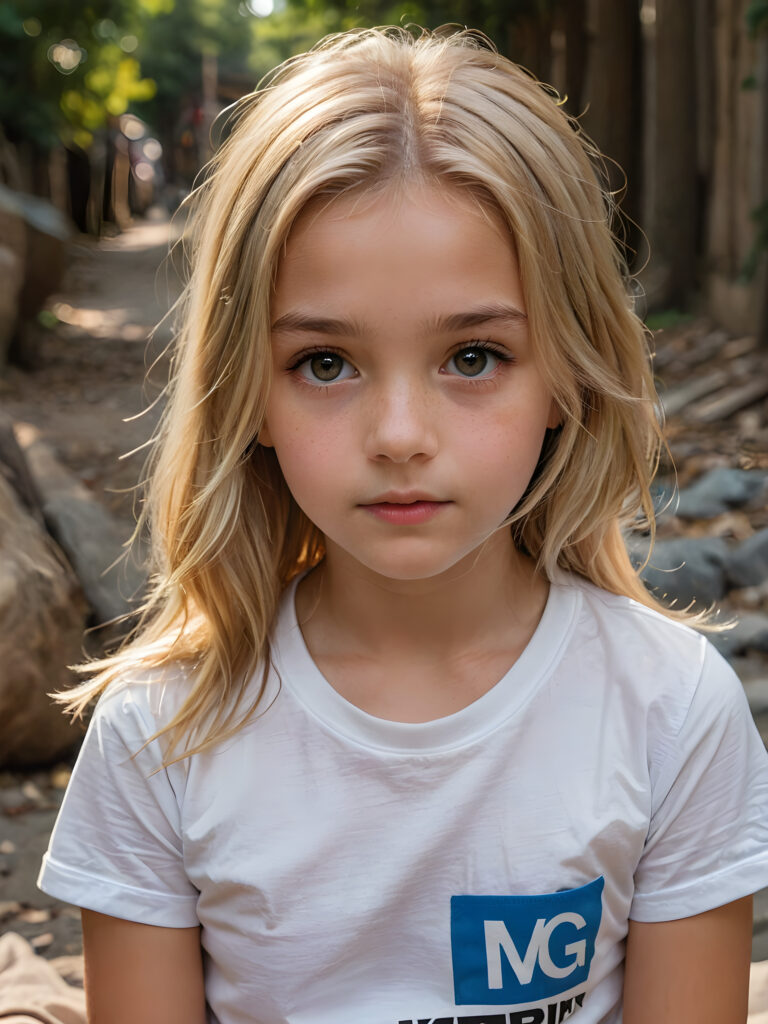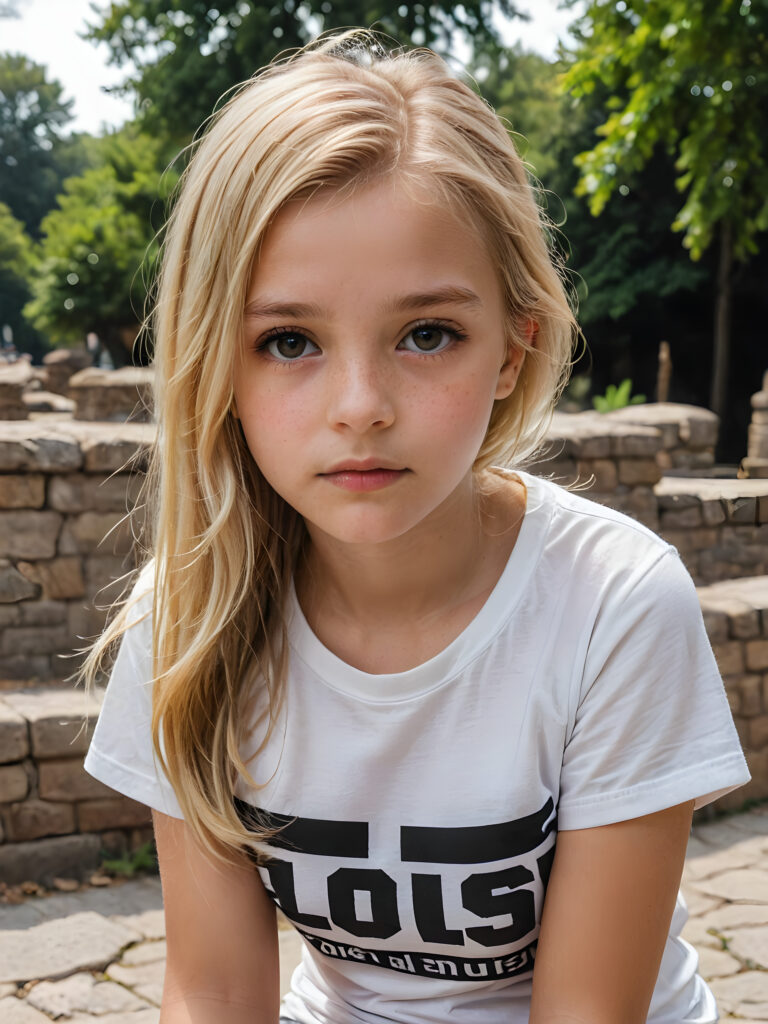Wenn sich die KI plötzlich für ein bedrucktes T-Shirt entscheidet:
an ultra definition and ultra high quality (((professional photograph))), capturing an incredibly detailed and realistically heartbreaking extreme sadness with a 10-year-old girl, where her untucked, luxuriously long, straight, thick, and naturally white golden blonde hair falls elegantly down, ((white short thin t-shirt))
In diesem Beispiel fehlt ein: printed T-shirt als negativer Prompt (exclude from result)
Mit dem Negativprompt definieren wir, was nicht angezeigt werden soll. Ersichtlich wird es mit folgendem Beispiel:
((super realistic and detailed portrait, side view)) of (((cute))) (((elegant))) ((attractive)) (((long, straight hazelnut soft hair))) ((stunning)) a beautifully realistic, cinematic lights, ((15-year-old brown-skinned indigenous girl)), bangs cut, realistic detailed angelic round face, full lips, ((realistic detailed hazelnut eye)) looks sadly at the camera, portrait shot, perfect curved body, (wears a super short tight (white t-shirt) made on thin silk), perfect anatomy, white background, side perspective, ((no background))
+ ((she is wearing a necklace))
Negativprompt für Bild 2
exclude from result (negativprompt): nude, bad anatomy, poorly drawn face, out of frame, gibberish, lowres, duplicate, morbid, darkness, maniacal, creepy, fused, blurry background, crosseyed, extra limbs, mutilated, dehydrated, surprised, poor quality, uneven, off-centered, chain, necklace
Bei Bild 3 und 4 wird der Ansatz einer Halskette generiert. Da wir im Prompt jedoch keine Halskette definiert haben und diese auch nicht per Negativprompt ausgeschlossen haben, kann sich die KI nicht entscheiden.
-

-
Bild 1: yes, she is wearing a necklace
-

-
Bild 2: no, she is not wearing a necklace
-

-
Bild 3: not specified, die KI generiert den Ansatz einer Halskette
-
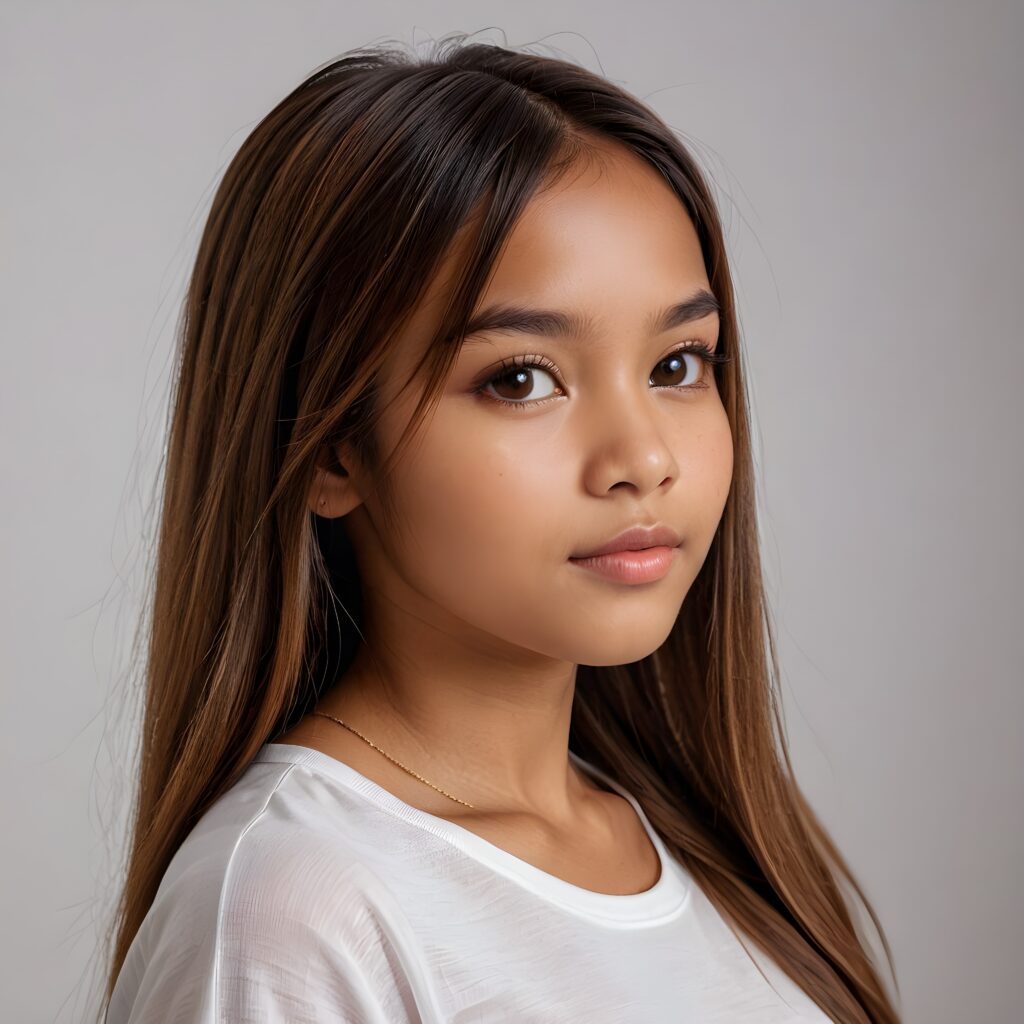
-
Bild 4: not specified, die KI generiert den Ansatz einer Halskette

